« The Latin Americanist's lament | Main | 12 elections in 12 months »
January 13, 2006
The rise of Colombia's "democratic left"
President Uribe continues to ride high in the polls in advance of the March legislative and May presidential elections. However, many observers wonder whether we can expect a surprise from Colombia’s “democratic left” – the term often used to describe left-of-center parties and candidates working within the constitutional system.
Left-leaning third-party candidates did surprisingly well the last time Colombia held elections, in October 2003, when – despite high approval ratings for Uribe, their polar political opposite – they captured several key governorships and mayor’s offices, including Bogotá.
For now at least, very few expect a third-party leftist to unseat Uribe. But it is possible that a left-wing presidential candidate could perform much better than expected, and that leftist parties could do quite well in the congressional elections. They even stand a chance of unseating the Liberal Party as the principal opposition bloc, essentially moving from third-party to “second-party” status.
This is so for two reasons:
- The pendulum of Colombian popular opinion has begun to swing away from the “mano dura” and a single-minded focus on security. While Colombia’s war continues to rage and appears to have intensified in 2005, the majority of Colombians who live in cities and near main roads are still feeling safer thanks to Uribe’s security policies. As a result, though, poll respondents are (a) more concerned about economic issues like unemployment and poverty than with security; and (b) more open to the possibility of renewed negotiations with guerrillas. Both of those trends favor the “democratic left” and other less right-wing candidates.
- Colombia’s traditionally fractious left has achieved an unprecedented degree of unity. When not being brutally repressed, political aspirants on Colombia’s left have generally been dispersed among many parties and tendencies. They had been divided for many reasons: ideological disagreements (some are much more radical than others); origins (intellectuals versus working-class, for instance); degrees of pragmatism (willingness to work with the right and “traditional” politicians when necessary); and simple personal ambitions and personality clashes.
Until very recently, most – but certainly not all – had coalesced into two groupings. The Polo Democrático Independiente or PDI, a legally constituted party formed in 2003 at the initiative of the current mayor of Bogotá, Luis Eduardo Garzón, included nine members of Colombia’s Congress, including two former members of the M-19 guerrilla group. The Alternativa Democrática or AD was a coalition of smaller parties, generally more radical or Marxist in orientation, but ironically with no former guerrillas among its candidates and officeholders.
At the end of November, after nine months of difficult negotiations, these two tendencies managed to unite as a new party, the Polo Democrático Alternativo or PDA. It is significant that they chose to go beyond merely backing the same candidate as a loose coalition, and instead formed an entirely new party.
Here are ten figures on Colombia’s democratic left from whom we are likely to hear much more over the next four years, as they lead the opposition to Uribe and become Colombia’s most vocal proponents of peace negotiations, human rights, social programs and alternative security strategies. We can expect these and other left-of-center candidates to be among the country’s top vote-getters in the March legislative elections, in part because of the left’s popularity in urban areas (just as Democrats perform better in U.S. cities) in a country that is 70 percent urban. Nonetheless, they will still likely be a minority, often overshadowed by the right – including the extreme, paramilitary-tied right. But 2006 could be a good year for them, and 2010 could be a great year.
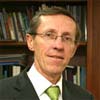 1. Antonio Navarro Wolff. The Polo Democrático Independiente chose Navarro as its presidential candidate at its nominating convention last June. He is generally expected to be the candidate of the new Polo Democrático Alternativo, which will choose its candidate through a ballot measure during the March legislative elections. Navarro is one of the best-known figures in Colombian politics. He was the number-two leader of the M-19 guerrilla movement that demobilized in 1990 after successful peace negotiations with the Colombian government. After M-19 leader Carlos Pizarro was assassinated that same year, Navarro ran for president as the M-19 candidate and got 700,000 votes – at the time, a record for a leftist candidate – and he was named Minister of Health in the government of the victorious candidate, César Gaviria. A coalition including the M-19 made a strong showing in elections for the assembly that rewrote Colombia’s constitution in 1991; Navarro was one of the assembly’s three co-chairs. Navarro went on to be a well-regarded mayor of his home city of Pasto, then a senator; he was the second-highest vote-getter in the 2002 legislative elections (Colombia elects its senators on a national basis, not by department or region).
1. Antonio Navarro Wolff. The Polo Democrático Independiente chose Navarro as its presidential candidate at its nominating convention last June. He is generally expected to be the candidate of the new Polo Democrático Alternativo, which will choose its candidate through a ballot measure during the March legislative elections. Navarro is one of the best-known figures in Colombian politics. He was the number-two leader of the M-19 guerrilla movement that demobilized in 1990 after successful peace negotiations with the Colombian government. After M-19 leader Carlos Pizarro was assassinated that same year, Navarro ran for president as the M-19 candidate and got 700,000 votes – at the time, a record for a leftist candidate – and he was named Minister of Health in the government of the victorious candidate, César Gaviria. A coalition including the M-19 made a strong showing in elections for the assembly that rewrote Colombia’s constitution in 1991; Navarro was one of the assembly’s three co-chairs. Navarro went on to be a well-regarded mayor of his home city of Pasto, then a senator; he was the second-highest vote-getter in the 2002 legislative elections (Colombia elects its senators on a national basis, not by department or region).
Though a former guerrilla, Navarro is not a radical; he has moved steadily toward the center over the years. “Though it makes many of my allies’ hair stand on end, I am of the center-left,” Navarro recently explained to an interviewer. While a critic of free trade and current drug policy, he supports both extradition (of criminals, not armed-group members) and aggressive military action against guerrillas – though he insists that this must go hand-in-hand with a comprehensive rural development strategy. While more ideological members of the democratic left consider him to be too accepting of “politics as usual,” Navarro has often served as a key mediator between the PDI/PDA’s centrist and far-left members.
Navarro has had difficulty getting his poll numbers out of the single digits, however. His standing has been affected by raw memories of the M-19’s tragic attempt to take over Colombia’s Palace of Justice in 1985, which Uribe has deftly exploited, and by a recently published book by a deceased journalist with ties to the Cali cartel, which claims that Navarro received money from narcotraffickers (the candidate vehemently denies this charge).
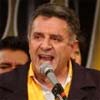 2. Luis Eduardo Garzón. Before being elected mayor of Bogotá in late 2003, Garzón was the head of the CUT, Colombia’s largest labor union, and a third-party presidential candidate in 2002. He had a difficult first year in office, facing problems of rising crime and the difficulty of governing when starting from scratch with a small political organization. He has since recovered his high approval ratings, and is now one of the most popular public figures in Colombia, widely believed to be a viable candidate for the 2010 presidential elections. (He is not running for any office this year, but the Bogotá mayorship is generally considered the last stepping-stone before the presidency.) Garzón has governed as a centrist, and has feuded quite openly with more ideological members of the PDI/PDA on Bogotá’s city council.
2. Luis Eduardo Garzón. Before being elected mayor of Bogotá in late 2003, Garzón was the head of the CUT, Colombia’s largest labor union, and a third-party presidential candidate in 2002. He had a difficult first year in office, facing problems of rising crime and the difficulty of governing when starting from scratch with a small political organization. He has since recovered his high approval ratings, and is now one of the most popular public figures in Colombia, widely believed to be a viable candidate for the 2010 presidential elections. (He is not running for any office this year, but the Bogotá mayorship is generally considered the last stepping-stone before the presidency.) Garzón has governed as a centrist, and has feuded quite openly with more ideological members of the PDI/PDA on Bogotá’s city council.
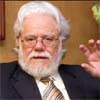 3. Carlos Gaviria. A former president of Colombia’s Constitutional Court, Gaviria was elected to the Senate in 2002 as a candidate of the Alternativa Democrática coalition. He was the AD candidate for the presidency, but Antonio Navarro, not Gaviria, is expected to be the candidate of the new PDA. Even before the leftist parties unified, Gaviria had nobly signaled his willingness to drop his candidacy in the name of unity, writing that “the consolidation of a democratic left force would be a historic event, and to have helped it happen would be my greatest political satisfaction.” Gaviria is viewed as an intellectual, well to the left of Navarro and Garzón on most issues, and is widely admired among Colombia’s intelligentsia. But intellectuals rarely win elections, and Gaviria is considered neither a gifted political organizer nor a dynamic public speaker.
3. Carlos Gaviria. A former president of Colombia’s Constitutional Court, Gaviria was elected to the Senate in 2002 as a candidate of the Alternativa Democrática coalition. He was the AD candidate for the presidency, but Antonio Navarro, not Gaviria, is expected to be the candidate of the new PDA. Even before the leftist parties unified, Gaviria had nobly signaled his willingness to drop his candidacy in the name of unity, writing that “the consolidation of a democratic left force would be a historic event, and to have helped it happen would be my greatest political satisfaction.” Gaviria is viewed as an intellectual, well to the left of Navarro and Garzón on most issues, and is widely admired among Colombia’s intelligentsia. But intellectuals rarely win elections, and Gaviria is considered neither a gifted political organizer nor a dynamic public speaker.
 4. Gustavo Petro. Considered the leader of the radical wing of the former PDI, Petro is a popular congressman from Bogotá – the top vote-getter in the lower house – and a former member of the M-19 guerrilla movement. He often makes headlines by publicly denouncing corruption and human-rights abuse – especially paramilitary infiltration of institutions – often by hosting congressional debates and hearings. When Colombia’s Caracol radio station asked members of Colombia’s Congress last year to name the colleague whom they considered to be the chamber’s “most outstanding,” Petro won overwhelmingly. This year, he is running for the Senate and is expected to win easily. An enthusiastic admirer of Venezuela’s Hugo Chávez, Petro has quarreled with more moderate members of the PDI/PDA, particularly Bogotá rival Luis Eduardo Garzón.
4. Gustavo Petro. Considered the leader of the radical wing of the former PDI, Petro is a popular congressman from Bogotá – the top vote-getter in the lower house – and a former member of the M-19 guerrilla movement. He often makes headlines by publicly denouncing corruption and human-rights abuse – especially paramilitary infiltration of institutions – often by hosting congressional debates and hearings. When Colombia’s Caracol radio station asked members of Colombia’s Congress last year to name the colleague whom they considered to be the chamber’s “most outstanding,” Petro won overwhelmingly. This year, he is running for the Senate and is expected to win easily. An enthusiastic admirer of Venezuela’s Hugo Chávez, Petro has quarreled with more moderate members of the PDI/PDA, particularly Bogotá rival Luis Eduardo Garzón.
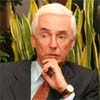 5. Jorge Enrique Robledo. Like Gaviria, Senator Robledo is considered a radical politician with a more academic or intellectual background. He is the most prominent officeholder from the Independent Revolutionary Workers’ Movement (MOIR), a decades-old non-violent Marxist-oriented party that participated in the Alternativa Democrática coalition. Robledo has been an outspoken opponent of free trade and globalization, and has also actively sought to stop the U.S.-funded practice of spraying aerial herbicides in coca-growing areas. He was a reluctant, but crucially important, participant in the democratic-left parties’ unification negotiations.
5. Jorge Enrique Robledo. Like Gaviria, Senator Robledo is considered a radical politician with a more academic or intellectual background. He is the most prominent officeholder from the Independent Revolutionary Workers’ Movement (MOIR), a decades-old non-violent Marxist-oriented party that participated in the Alternativa Democrática coalition. Robledo has been an outspoken opponent of free trade and globalization, and has also actively sought to stop the U.S.-funded practice of spraying aerial herbicides in coca-growing areas. He was a reluctant, but crucially important, participant in the democratic-left parties’ unification negotiations.
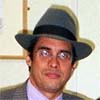 6. Wilson Borja. A congressman from Bogotá and a longtime labor leader, Borja is rarely seen without his trademark suit, tie and fedora. He was a member of the Patriotic Union party (started by the FARC during a 1980s peace process, then wiped out by a campaign of right-wing violence) and the Communist Party before becoming a key figure in the Alternativa Democrática. He is active in Bogotá politics; like Petro, he is sometimes at odds with Mayor Garzón. In December 2000 Borja – then a union leader – was the target of an assassination attempt in Bogota, in which his car was hit by 56 bullets and Borja was severely wounded. The attack was carried out by several military and police agents and paramilitaries; few have been found guilty or punished.
6. Wilson Borja. A congressman from Bogotá and a longtime labor leader, Borja is rarely seen without his trademark suit, tie and fedora. He was a member of the Patriotic Union party (started by the FARC during a 1980s peace process, then wiped out by a campaign of right-wing violence) and the Communist Party before becoming a key figure in the Alternativa Democrática. He is active in Bogotá politics; like Petro, he is sometimes at odds with Mayor Garzón. In December 2000 Borja – then a union leader – was the target of an assassination attempt in Bogota, in which his car was hit by 56 bullets and Borja was severely wounded. The attack was carried out by several military and police agents and paramilitaries; few have been found guilty or punished.
 7. Daniel García-Peña. If you’ve ever attended a conference about Colombia held in the United States, there is a decent chance that you’ve seen García-Peña who, with his unaccented English and very clear analysis, is in high demand as a panelist. As vice-president of the old PDI, he has been a key ally of Luis Eduardo Garzón and a vocal advocate of unifying and expanding the democratic left. García-Peña was a government peace negotiator during President Ernesto Samper’s administration, he founded and directed the NGO Planeta Paz, and is now one of the “civil society guarantors” of the ongoing talks with the ELN guerrillas. And he is also running for Congress from Bogotá.
7. Daniel García-Peña. If you’ve ever attended a conference about Colombia held in the United States, there is a decent chance that you’ve seen García-Peña who, with his unaccented English and very clear analysis, is in high demand as a panelist. As vice-president of the old PDI, he has been a key ally of Luis Eduardo Garzón and a vocal advocate of unifying and expanding the democratic left. García-Peña was a government peace negotiator during President Ernesto Samper’s administration, he founded and directed the NGO Planeta Paz, and is now one of the “civil society guarantors” of the ongoing talks with the ELN guerrillas. And he is also running for Congress from Bogotá.
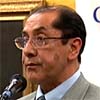 8. Parmenio Cuéllar. Cuéllar served for a year as Minister of Justice in the administration of President Andrés Pastrana, then was elected governor of Nariño department, where he remains a very influential political figure. Though not a member of the PDI, AD or PDA, he “leads a bloc of leaders in the south of the country” which, according to El Tiempo, is negotiating the possibility of integrating into the PDA.
8. Parmenio Cuéllar. Cuéllar served for a year as Minister of Justice in the administration of President Andrés Pastrana, then was elected governor of Nariño department, where he remains a very influential political figure. Though not a member of the PDI, AD or PDA, he “leads a bloc of leaders in the south of the country” which, according to El Tiempo, is negotiating the possibility of integrating into the PDA.
 9. Gloria Flórez. The PDA’s list of officeholders and candidates is heavily male-dominated; in fact, Colombia’s best-known female progressives – figures like Piedad Córdoba, Cecilia López or María Isabel Urrutia – have not joined the PDA; the first two, in fact, remain on the left wing of Colombia’s Liberal Party. An exception is Gloria Flórez, a longtime human rights activist who founded and heads the influential human-rights group MINGA and was a member of the PDI’s governing board. Though Flórez is not running for office this year, Colombia’s most-circulated news magazine, Semana, named her one of the most influential women in Colombian history. “Her colleagues consider her to be one of the [PDI] movement’s most trustworthy members. And she is surely one of the leaders with the brightest future on the country’s left.”
9. Gloria Flórez. The PDA’s list of officeholders and candidates is heavily male-dominated; in fact, Colombia’s best-known female progressives – figures like Piedad Córdoba, Cecilia López or María Isabel Urrutia – have not joined the PDA; the first two, in fact, remain on the left wing of Colombia’s Liberal Party. An exception is Gloria Flórez, a longtime human rights activist who founded and heads the influential human-rights group MINGA and was a member of the PDI’s governing board. Though Flórez is not running for office this year, Colombia’s most-circulated news magazine, Semana, named her one of the most influential women in Colombian history. “Her colleagues consider her to be one of the [PDI] movement’s most trustworthy members. And she is surely one of the leaders with the brightest future on the country’s left.”
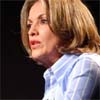 10. María Emma Mejía. A key figure in the Liberal Party’s social-democratic wing – including a term as foreign minister in the Samper administration – Mejía is in intense negotiations with the PDA leadership as she considers switching parties. If she joins the party, a condition may be that she heads the party’s list of candidates on the ballot for elections to the Senate. If Mejía, whose government experience gives her broad name-recognition, defects to the PDA, it will be considered a major coup for the party and a strengthening of its centrist credentials. However, it may not sit well with party activists from farther left on the political spectrum or from labor, campesino or popular-sector backgrounds. Mejía, after all, is a well-connected elite politician who served in governments that strictly followed orthodox “Washington Consensus” economic policies. However, Gustavo Petro, widely considered a leader of the PDI/PDA radical wing, insists that he would be happy to have Mejía join the partsy: “I invited María Emma to join the Polo on two occasions. I don’t understand where people get the idea that I’m against her.”
10. María Emma Mejía. A key figure in the Liberal Party’s social-democratic wing – including a term as foreign minister in the Samper administration – Mejía is in intense negotiations with the PDA leadership as she considers switching parties. If she joins the party, a condition may be that she heads the party’s list of candidates on the ballot for elections to the Senate. If Mejía, whose government experience gives her broad name-recognition, defects to the PDA, it will be considered a major coup for the party and a strengthening of its centrist credentials. However, it may not sit well with party activists from farther left on the political spectrum or from labor, campesino or popular-sector backgrounds. Mejía, after all, is a well-connected elite politician who served in governments that strictly followed orthodox “Washington Consensus” economic policies. However, Gustavo Petro, widely considered a leader of the PDI/PDA radical wing, insists that he would be happy to have Mejía join the partsy: “I invited María Emma to join the Polo on two occasions. I don’t understand where people get the idea that I’m against her.”
This list leaves out a few other key figures. Angelino Garzón, the governor of Valle del Cauca department (which includes the cities of Cali and Buenaventura) is a PDA member and a strong advocate of renewed negotiations with guerrillas. Guillermo Alfonso Jaramillo, a doctor and popular politician who served twice as governor of Tolima, ran unsuccessfully for the PDI’s presidential nomination in June; he is considered to be to the left of Navarro. Samuel Moreno, a senator who held the PDI’s rotating presidency last year, is considered an ally of mayor Garzón and also lost the presidential nomination in June. Jaime Dussán is a center-left senator from a union background. Floro Tunubalá, a former governor of Cauca and the first indigenous governor in Colombian history, is not a member of any national party but is being actively courted by the PDA.
A recent analysis in the Colombian newsmagazine Cambio explained well the opportunities and challenges that face Colombia’s democratic left in 2006.
The Conservative Party has no candidate and is supporting Álvaro Uribe. The Liberals are incapable of renewing themselves since Horacio Serpa (the losing Liberal Party candidate in 1998 and 2002) seems to be able to win their nominating convention. As a result the PDI and AD – or rather, the new PDA – has the responsibility to become the true electoral alternative. In order to do so, their leaders have to define a left-leaning platform that neither smells like the old Marxist orthodoxy nor falls into the trap of populism, but that is able to attract a significant portion of working-class voters.
And of course, once they’ve done that, the leaders of the democratic left have to stay alive – which hasn’t always been possible for non-violent leftists in Colombia. However, if political space for elected leftists remains open – if a violent backlash can be avoided even after a possible strong showing in the March elections – it will be a very positive sign about the strength of Colombian democracy. It will mean that, in the words of Daniel García-Peña,
Less than twenty years after the genocide against the Patriotic Union, the development and growth of the PDA implies that a new political map is being drawn, and that Colombian democracy is evolving – despite the paramilitarization of vast regions of the country.
Posted by isacson at January 13, 2006 2:09 PM
Trackback Pings
TrackBack URL for this entry:
http://ciponline.org/cgi-bin/mt-tb.cgi/179
Comments
Post a comment
Thanks for signing in, . Now you can comment. (sign out)
(If you haven't left a comment here before, you may need to be approved by the site owner before your comment will appear. Until then, it won't appear on the entry. Thanks for waiting.)